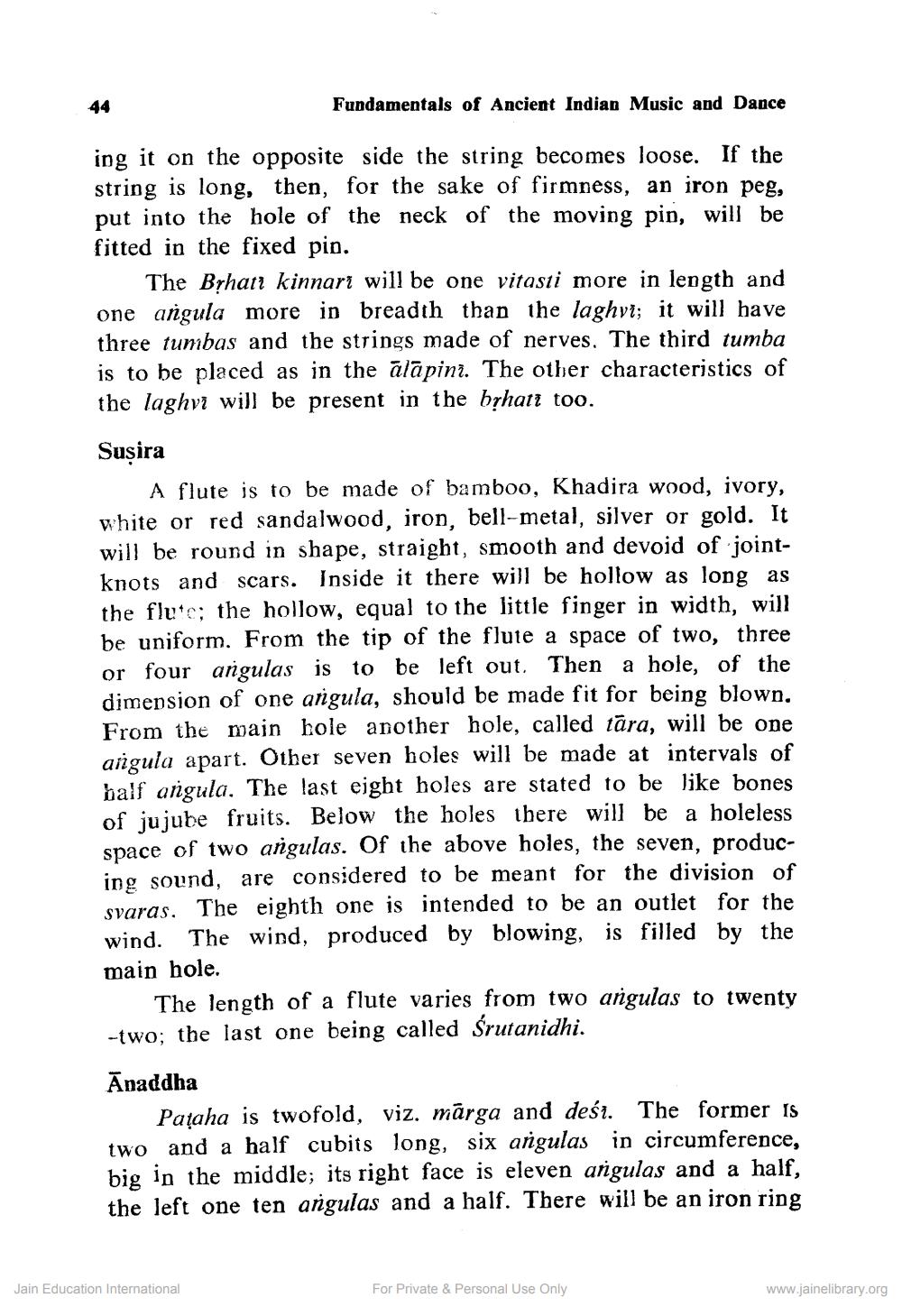________________
Fundamentals of Ancient Indian Music and Dance
ing it on the opposite side the string becomes loose. If the string is long, then, for the sake of firmness, an iron peg, put into the hole of the neck of the moving pin, will be fitted in the fixed pin.
The Brhati kinnari will be one vitasti more in length and one angula more in breadth than the laghvi; it will have three tumbas and the strings made of nerves. The third tumba is to be placed as in the ālāpini. The other characteristics of the laghvi will be present in the bịhatı too.
Susira
A flute is to be made of bamboo, Khadira wood, ivory, white or red sandalwood, iron, bell-metal, silver or gold. It will be round in shape, straight, smooth and devoid of jointknots and scars. Inside it there will be hollow as long as the flute; the hollow, equal to the little finger in width, will be uniform. From the tip of the flute a space of two, three or four angulas is to be left out. Then a hole, of the dimension of one angula, should be made fit for being blown. From the main hole another hole, called tāra, will be one angula apart. Other seven holes will be made at intervals of balf angula. The last eight holes are stated to be like bones of jujube fruits. Below the holes there will be a holeless space of two angulas. Of the above holes, the seven, producing sound, are considered to be meant for the division of svaras. The eighth one is intended to be an outlet for the wind. The wind, produced by blowing, is filled by the main hole.
The length of a flute varies from two angulas to twenty --two; the last one being called Śrutanidhi. Ānaddha
Pațaha is twofold, viz. märga and desi. The former is two and a half cubits long, six angulas in circumference, big in the middle; its right face is eleven angulas and a half, the left one ten angulas and a half. There will be an iron ring
Jain Education International
For Private & Personal Use Only
www.jainelibrary.org




